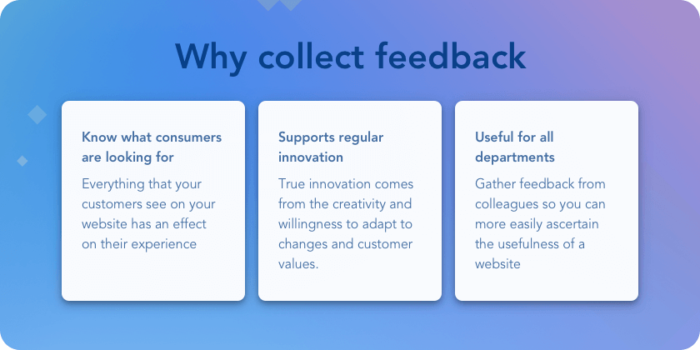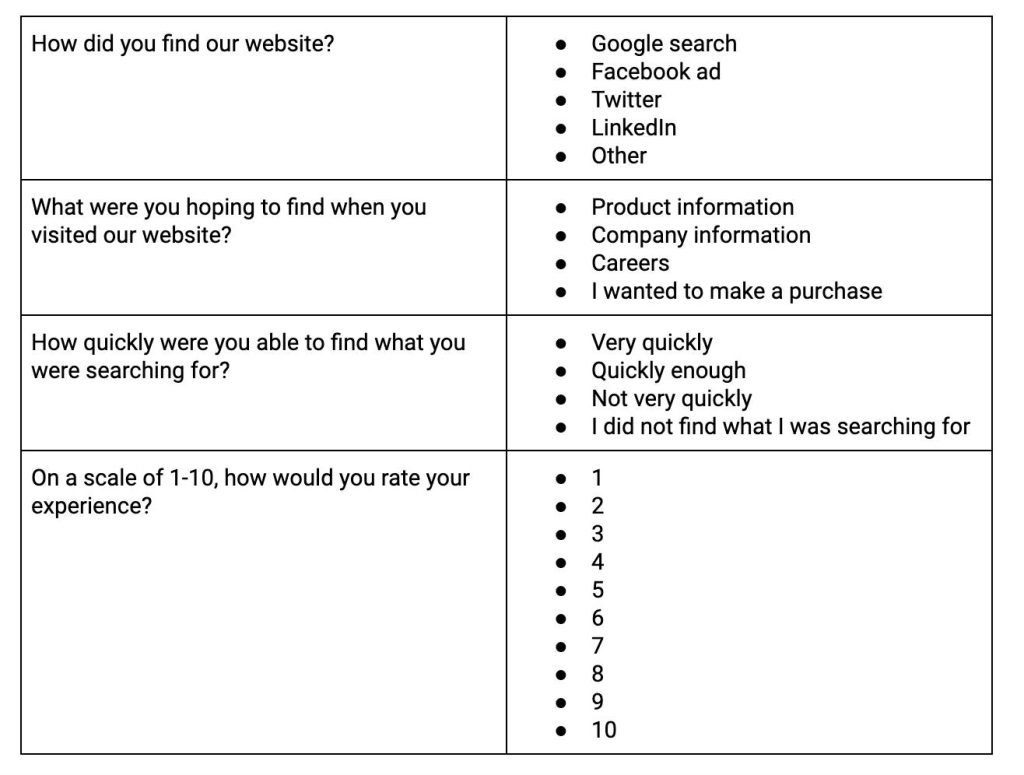In the digital era, websites are key points of contact between businesses and their customers. To guarantee an excellent user experience, businesses must realize how their websites are functioning and how they can be upgraded. This is where website feedback plays a vital role. In this article, we will explore the concept of website feedback’s significance, and how it can be effectively harnessed to elevate your online presence.
Page Contents:
What is Website feedback?
Website feedback includes collecting and analyzing opinions, suggestions, and comments from website visitors and users. It helps you understand how users view and use your website, so you can spot problems, fix usability issues, and improve the user experience.
Importance of website feedback
Website feedback is important as it gives useful insights and answers related to customer behavior. It provides you with facts such as the reasons people are not filling up the form or abandoning the shopping cart, the possible causes of high bounce rate, customer experiences, concerns, and so on.
- It helps you in improving your website, products, and services
- It makes your customers heard and appreciated
- Helps in measuring customer satisfaction
- Helps in providing a better user experience
- Establishes business credibility and trust
Types of Website Feedback
User Surveys: User surveys are an effective means of gathering feedback from website visitors. They can be implemented through pop-up forms, embedded questionnaires, or email surveys. By posing specific questions about user preferences, satisfaction levels, or suggestions for improvement, user surveys provide structured feedback.
Feedback Forms: Integrating feedback forms within your website enables visitors to provide instant feedback on their browsing experience, report technical issues, or suggest enhancements. These forms typically feature open-ended questions to gather qualitative feedback.
Ratings and Reviews: Incorporating a rating and review system allows users to share their experiences and opinions about your products, services, or content. The feedback garnered from ratings and reviews helps gauge customer satisfaction and facilitates data-driven decision-making.
Heatmaps and Click Tracking: Utilizing heatmaps and click tracking tools visually represents user behavior, recording where visitors click, scroll, or spend the most time on a webpage. This data enables the identification of design flaws, high-engagement areas, or navigation difficulties.
Social Media Monitoring: Monitoring social media platforms allows you to analyze unsolicited feedback and conversations related to your website. By tracking mentions, comments, and hashtags associated with your brand, you can gain valuable insights and promptly address any concerns.
Leveraging Website Feedback Effectively
Collection and Analysis: Establish mechanisms to gather feedback using a variety of methods such as surveys, feedback forms, and reviews. Utilize analytics tools to collect quantitative data, while qualitative feedback should be carefully examined for patterns, recurring issues, or improvement opportunities.
Prioritizing Actionable Feedback: While all feedback is useful, prioritize actionable advice that can be taken to improve your website. Focus on feedback that is in line with your business objectives, as it can have a major impact on the user experience.
Implementing Changes: Act on the feedback received by making the necessary improvements to your website. This may involve optimizing navigation, addressing technical issues, improving content, or enhancing design elements. Continuously monitor the impact of these changes and make adjustments as necessary.
Engaging with Users: Acknowledge and respond to the feedback received to demonstrate that user opinions are valued. Engaging in a conversation with users not only fosters trust but also provides an opportunity to gain further insights and refine your website continuously.
Testing and Iteration: Conduct A/B testing to validate the effectiveness of implemented changes. Compare the performance of different versions of your website to determine which modifications lead to better user experiences. Continuous testing and iteration ensure ongoing improvement and optimization.
Website feedback should be an integral component of your online business. It is an invaluable resource that empowers businesses to enhance their online presence and deliver exceptional user experiences. By actively seeking and leveraging feedback from users, you can identify areas for improvement, promptly address issues, and create a website that caters to the needs and expectations of your target audience. Embrace website feedback as a core component of your digital strategy, utilizing it to stay ahead in the ever-evolving online landscape.

